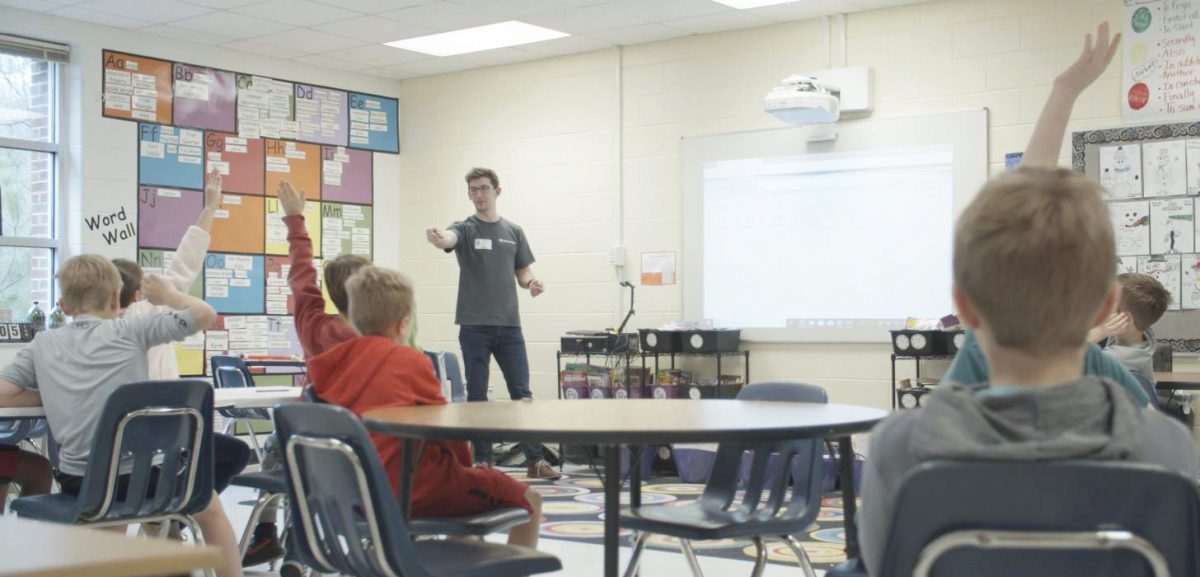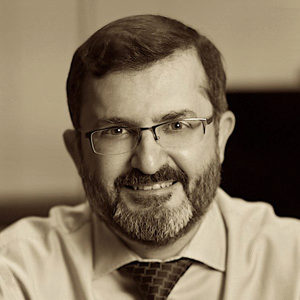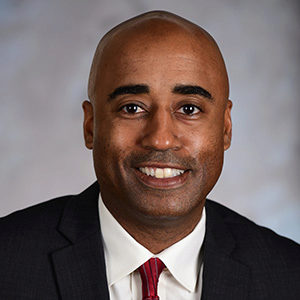
Raise your hand if you want to go to space: AE alumnus, Warren Eshpeter
A year ago, when his classmates were polishing their resumes for jobs they hoped to land, Warren Eshpeter was processing the paperwork for a nonprofit he hoped to start.
By the time he graduated in the spring of 2020, that nonprofit - Let’s Go to Space (LG2S) - was no longer just paperwork. It was his job.
 |
|
Warren Eshpeter |
It was an unlikely result for Eshpeter who, like many of his classmates, had completed co-ops and internships - at JPL, and Ball Aerospace – and had conducted undergraduate research in the Space Systems Design Lab.
But it was the right result.
It started as a joke among Eshpeter and his friends. “Let’s send memes to space,” they said as they considered their post-graduate careers. For Eshpeter, the humor had a little more ballast: he saw a unique opportunity to teach the next generation about space.
Eshpeter acted on his idea, actively reaching out to Atlanta area schools to gauge their interest in having a STEM advocate speak before their classes. The interest was there.
He remembers presenting one of those talks before students at Cartersville High School during the Fall 2019 semester. It focused on the field of aerospace and his own experience at Georgia Tech. The spark was there.
“That visit really opened my eyes to give more to K-12 outreach,” explained Eshpeter.
The result, Let’s Go to Space, officially opened its doors in January 2020. The non-profit had planned to offer STEM summer camps, after school programs, K-12 outreach, and satellite education. That business plan was remarkably flexible when COVID-19 forced everything to go online.
 |
| Prof. Joseph H. Saleh |
LG2S's week-long after-school program will begin September 8. Some of the topics include: rocketry, stars and constellations, radio, and the moon – to name a few.
“We aim to generate STEM awareness and create confidence in the students. We want to bring to light the different roles aerospace engineers play in space exploration and to show them that careers in space aren't limited to becoming an astronaut," said Eshpeter.
To ensure the success of his fledgling nonprofit, Eshpeter recruited board members with relevant experience from academia and industry: Dr. Jeff Ganley, a senior aerospace engineer with the Air Force Research Laboratory Space Vehicles Directorate, Skyler Shuford the chief operating officer of Hermeus, and Georgia Tech aerospace engineering professor Dr. Joseph H. Saleh.
“Warren has chosen a unique path, a road less traveled of social entrepreneurship but with a wonderfully creative focus on STEM education through space activities and satellite building,” said Saleh.
“I have also seen him reaching out and teaching over a hundred kids already and bringing so much joy and excitement to the subject matter and to share with the kids. It is incredibly meaningful.”
The Georgia Tech connection doesn't stop with Saleh. The LG2S team is also working with the Georgia Space Grant Consortium which is housed at the AE School.
 |
| Prof. Stephen Ruffin |
“We’re really excited to see the energy they are pouring into the next generation of aerospace engineering students and entrepreneurs, "said GSGC director Stephen Ruffin.
“That's why we’re supporting this innovative initiative.”
Meanwhile, that old joke about memes has gotten a little more serious. Eshpeter and his colleagues are planning to include memes in an upcoming project that will utilize NASA imaging technology to transmit memes from a satellite back to Earth.
The project, Mission for Education and Multimedia Engagement Satellite (MEMESat-1) involves the design and launch of a CubeSat equipped with amateur radio technology and software that converts audio signals into images.
That satellite will be loaded up with memes that LG2S will solicit and collect from the public. The plan is to transmit one meme to Earth each day, once the tiny satellite has attained the right position in space.
“Using amateur radio bands because they are free, they give the greatest connectivity to other amateur radio users, and allow us to communicate with the satellite,” explained Eshpeter.